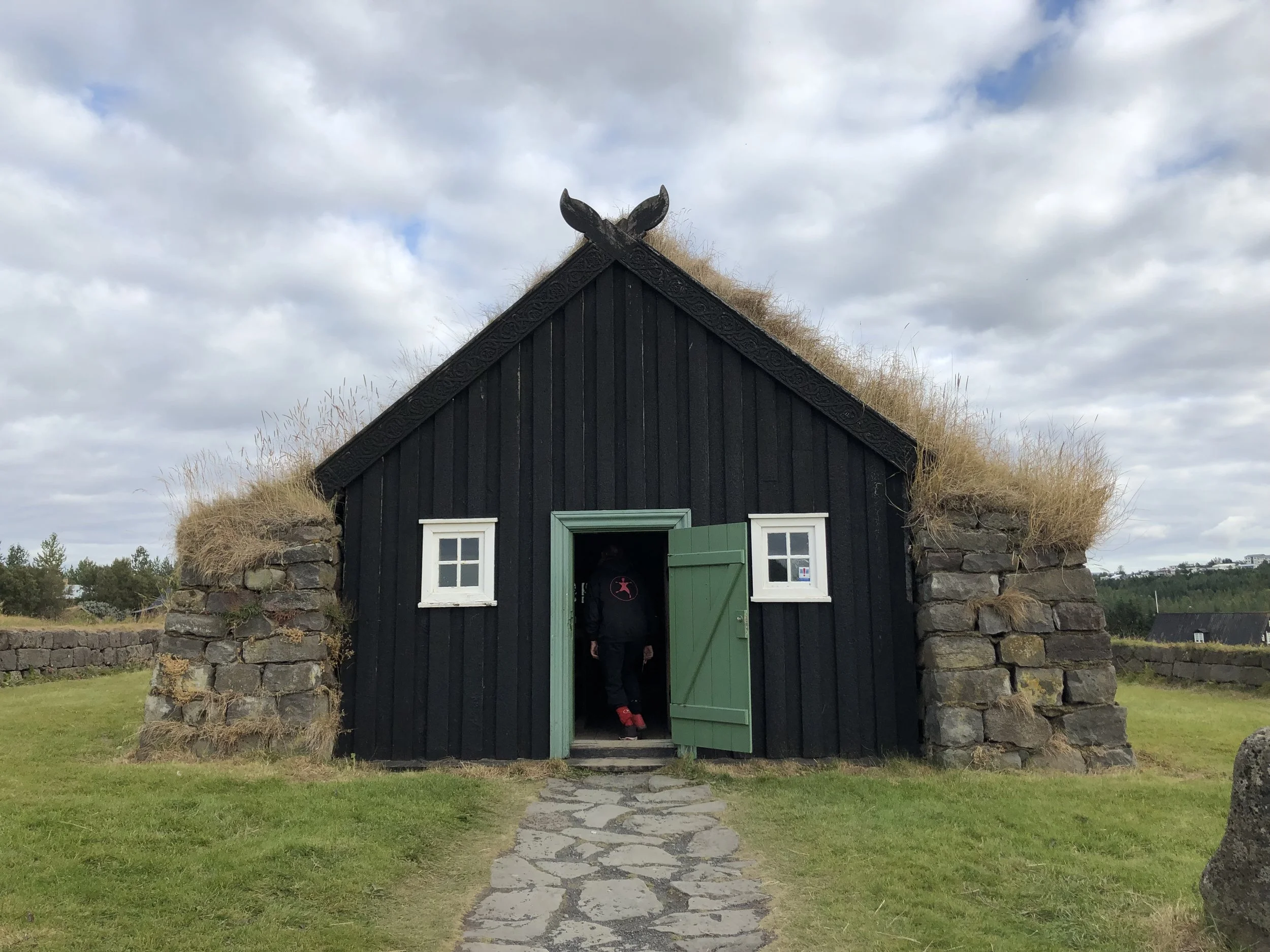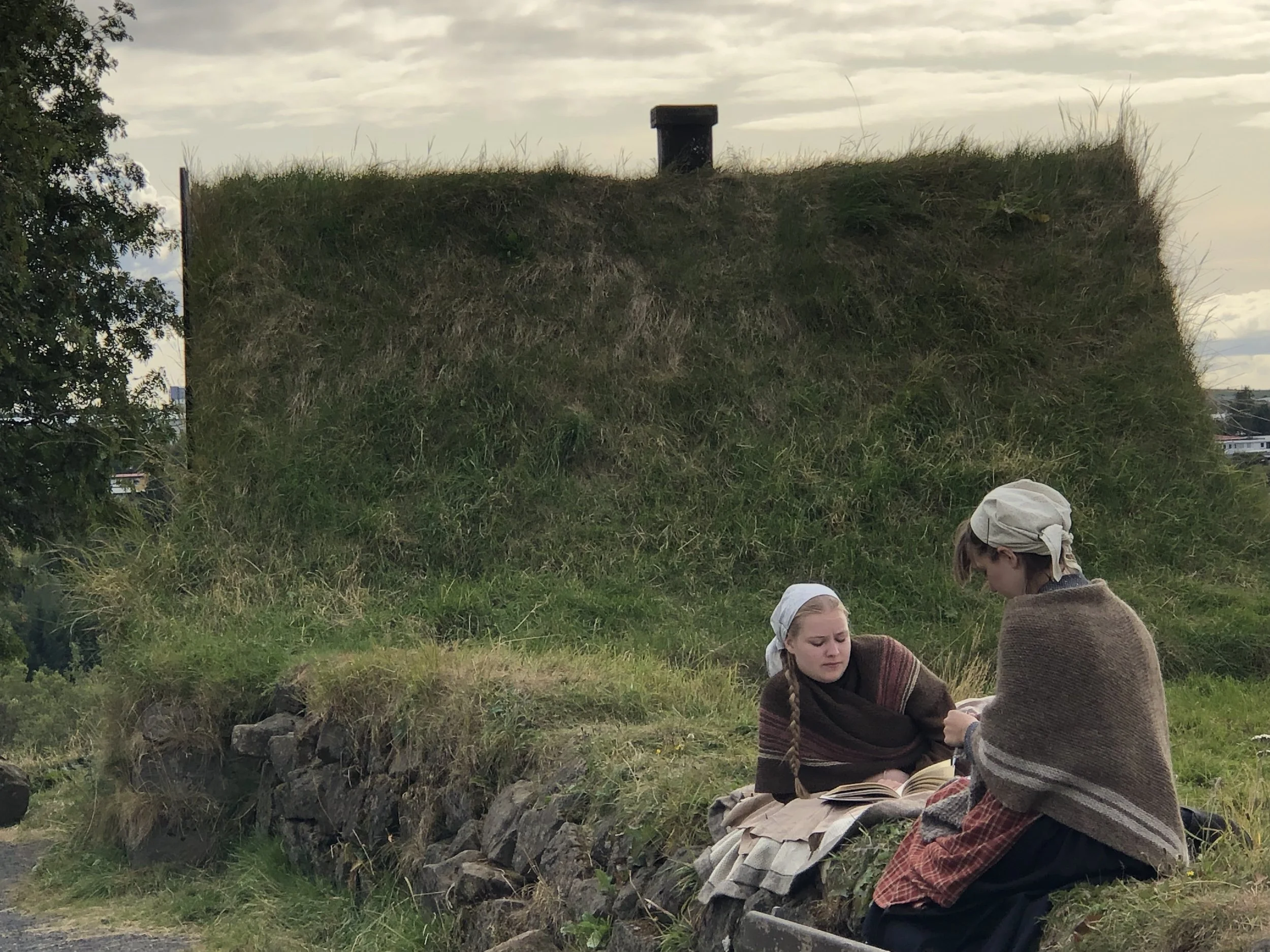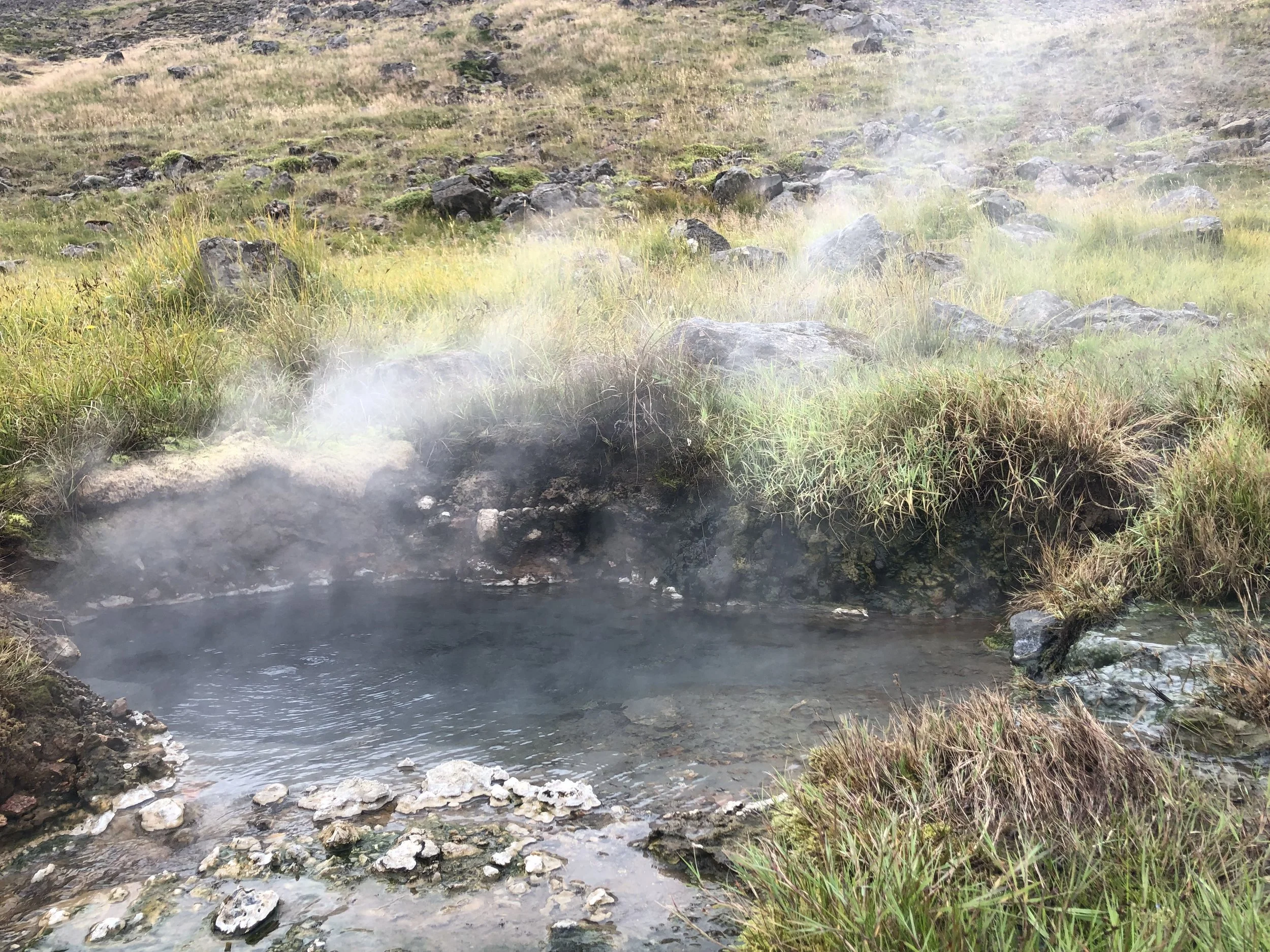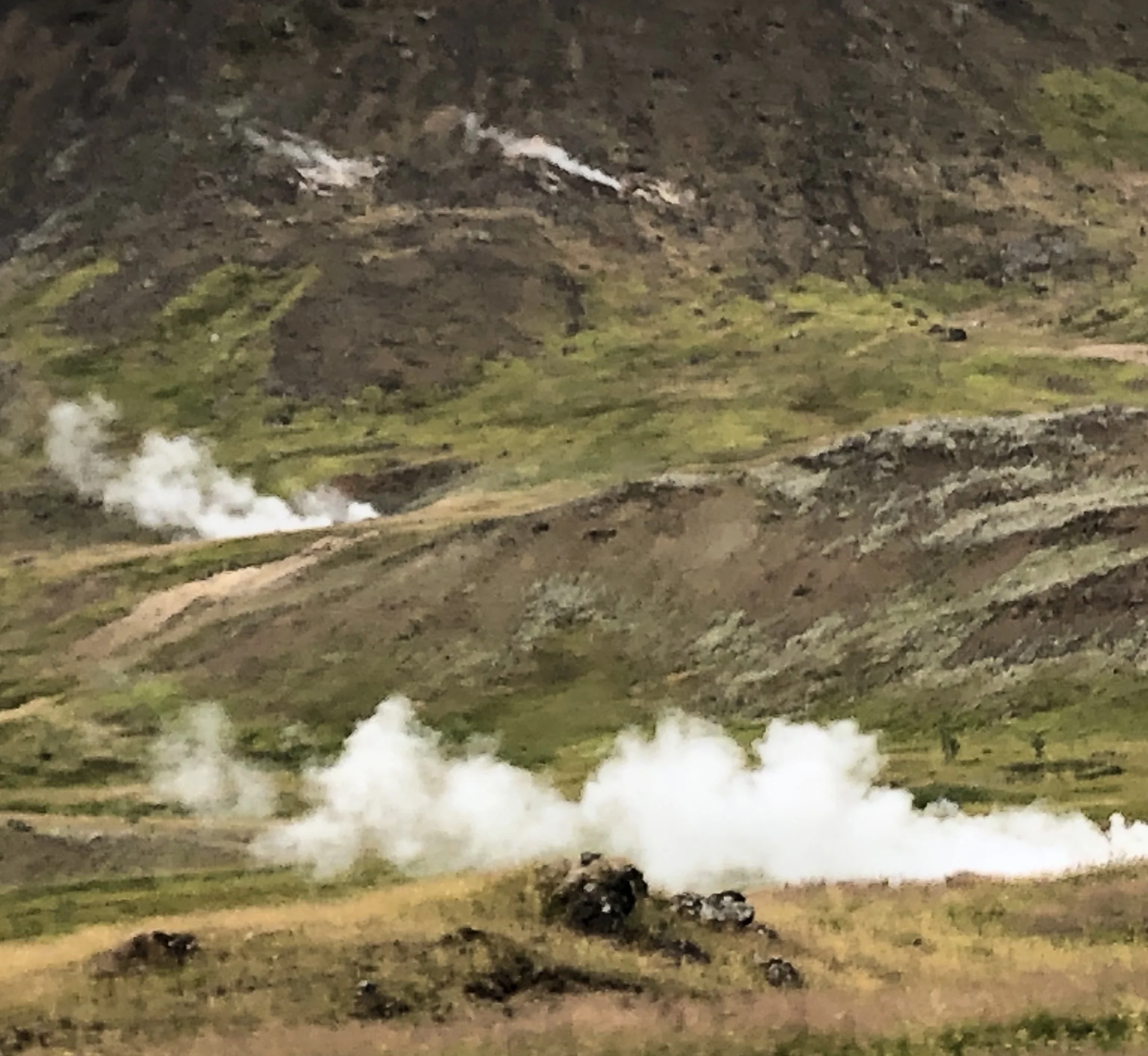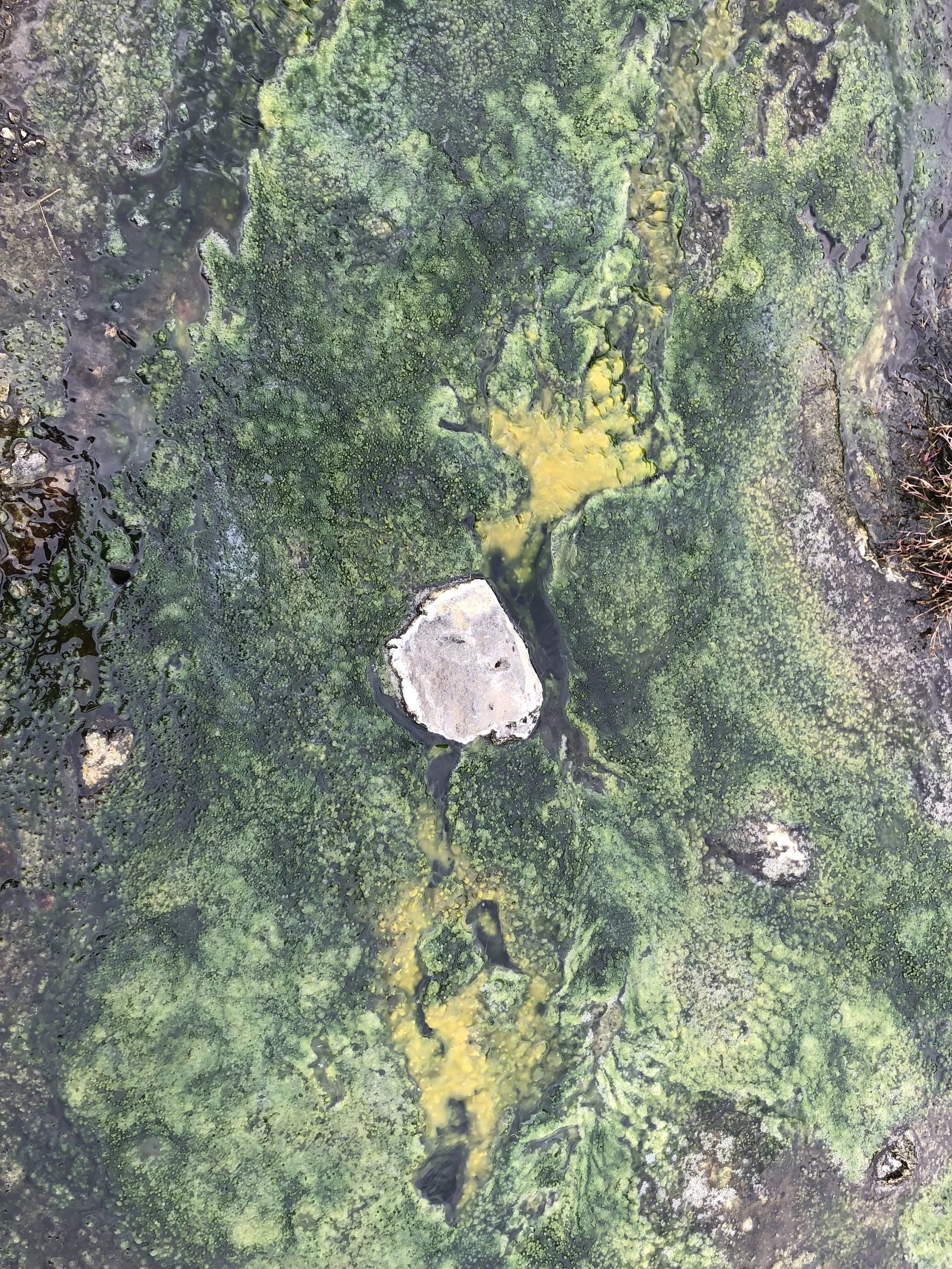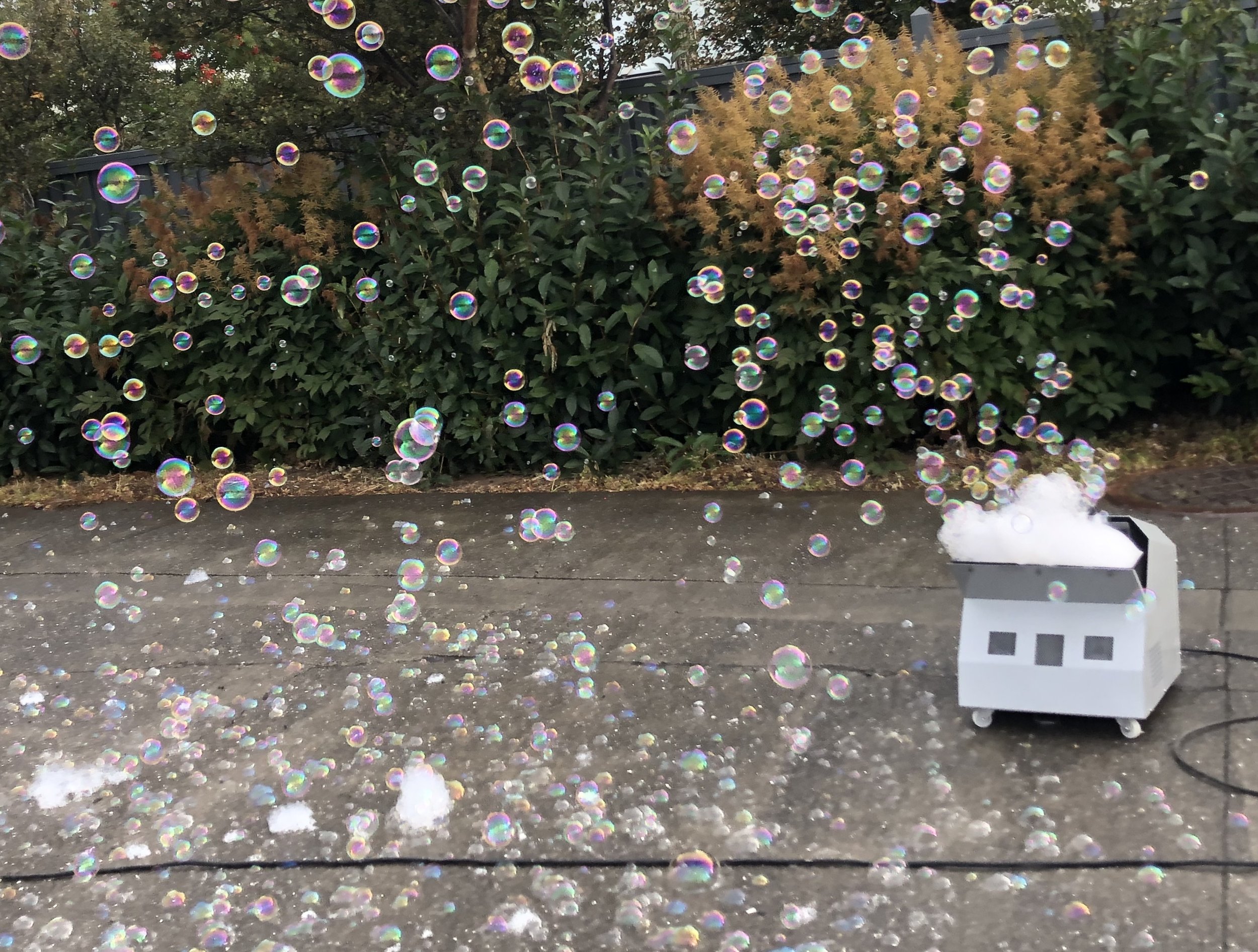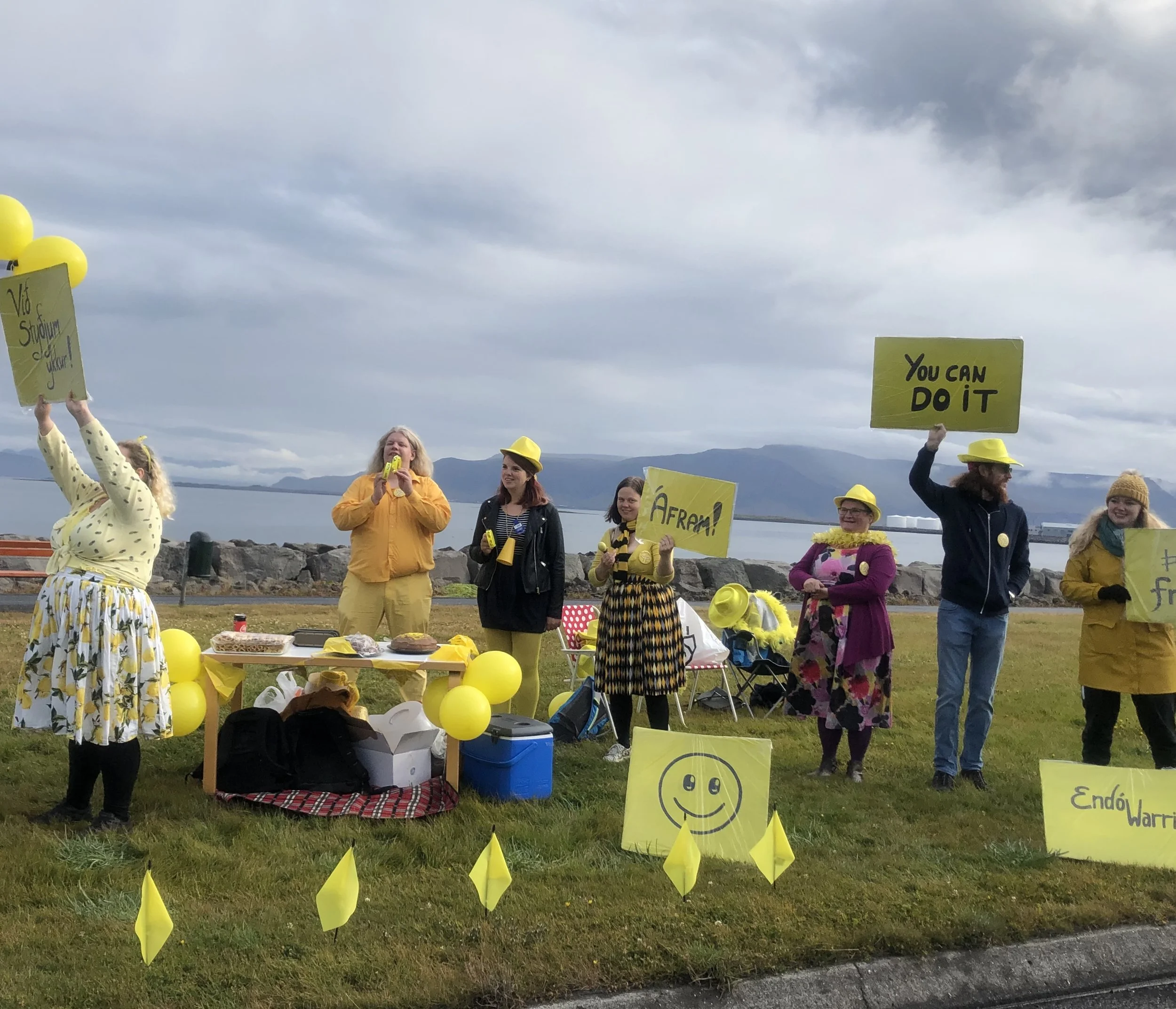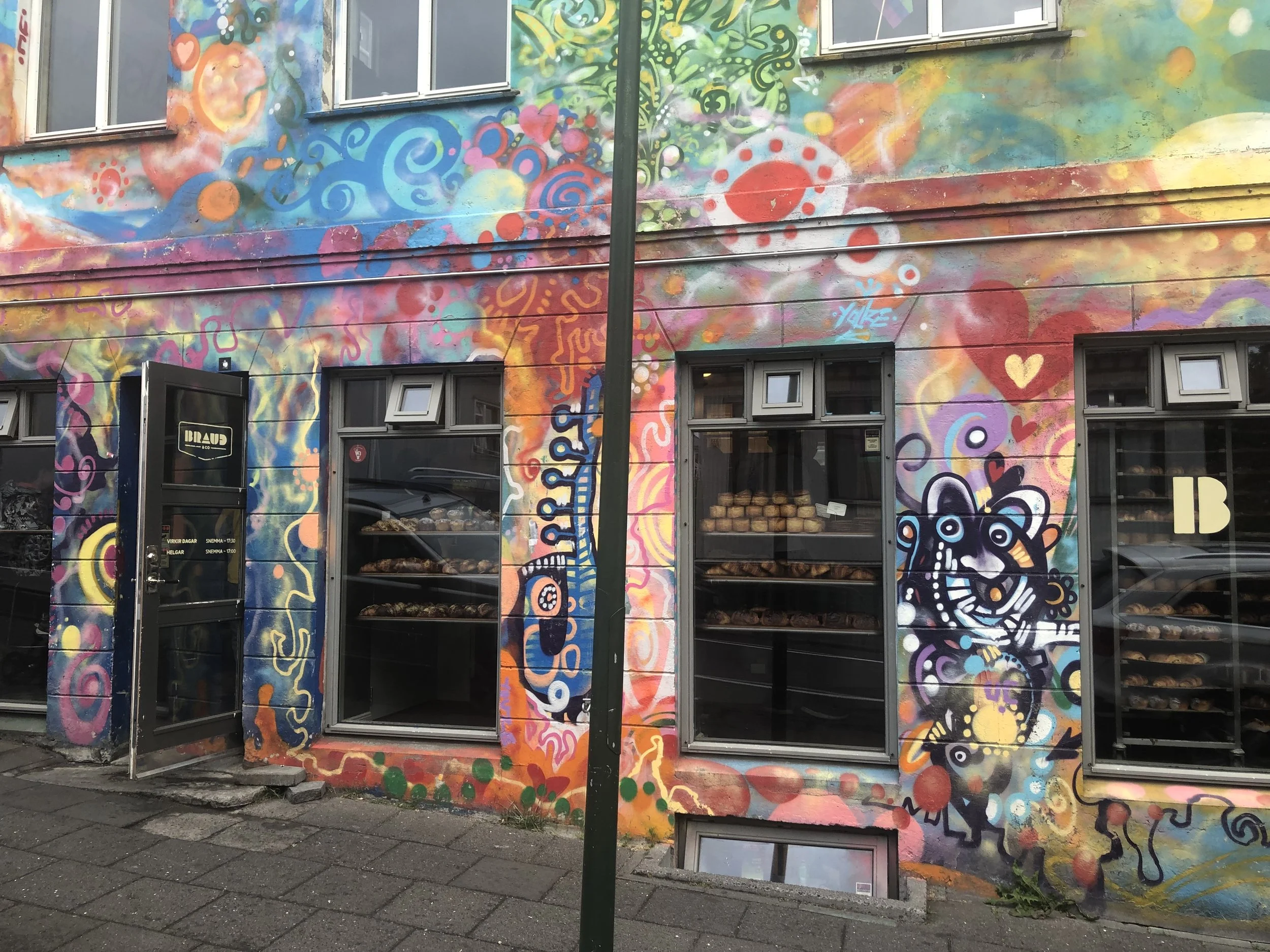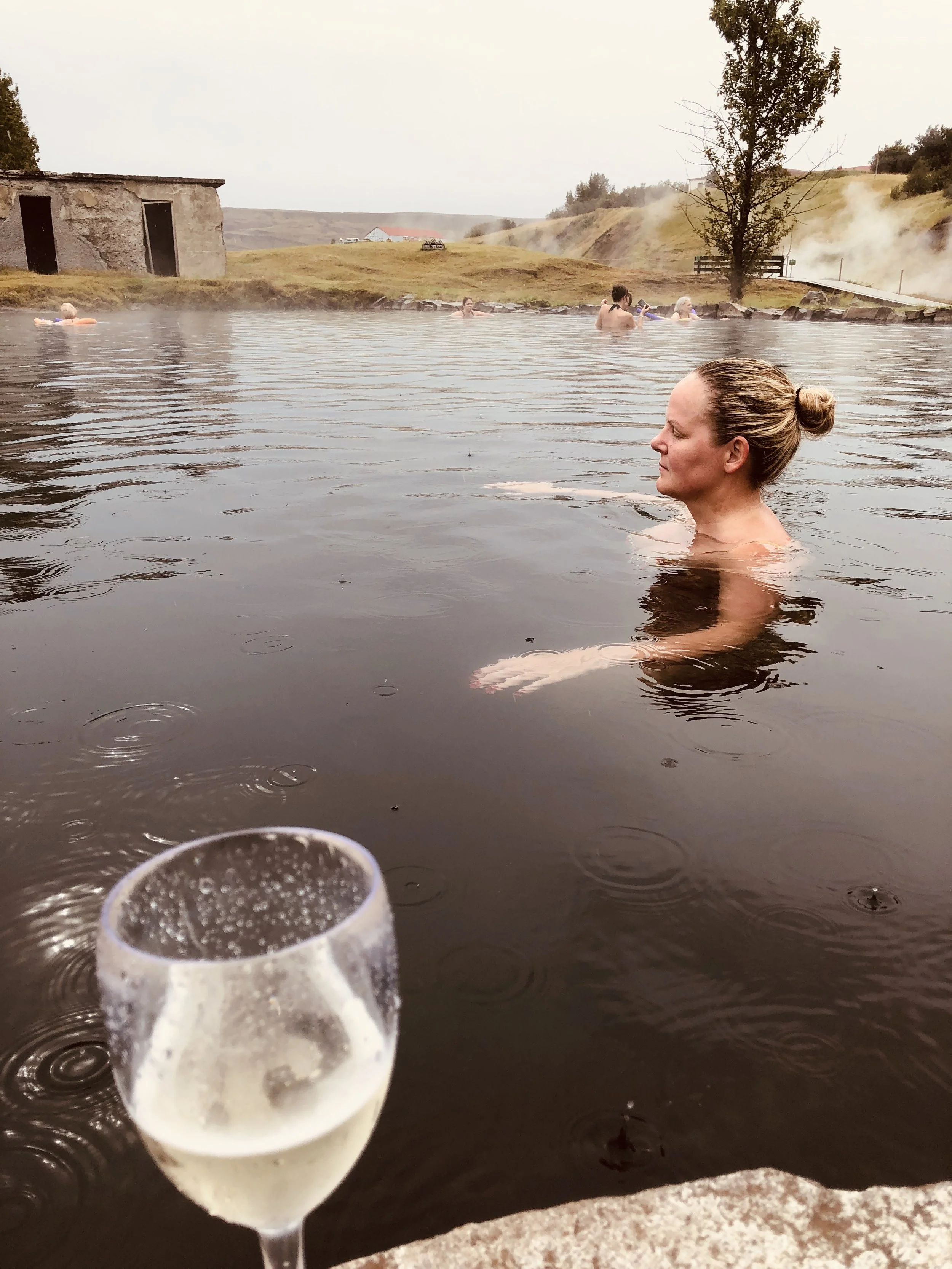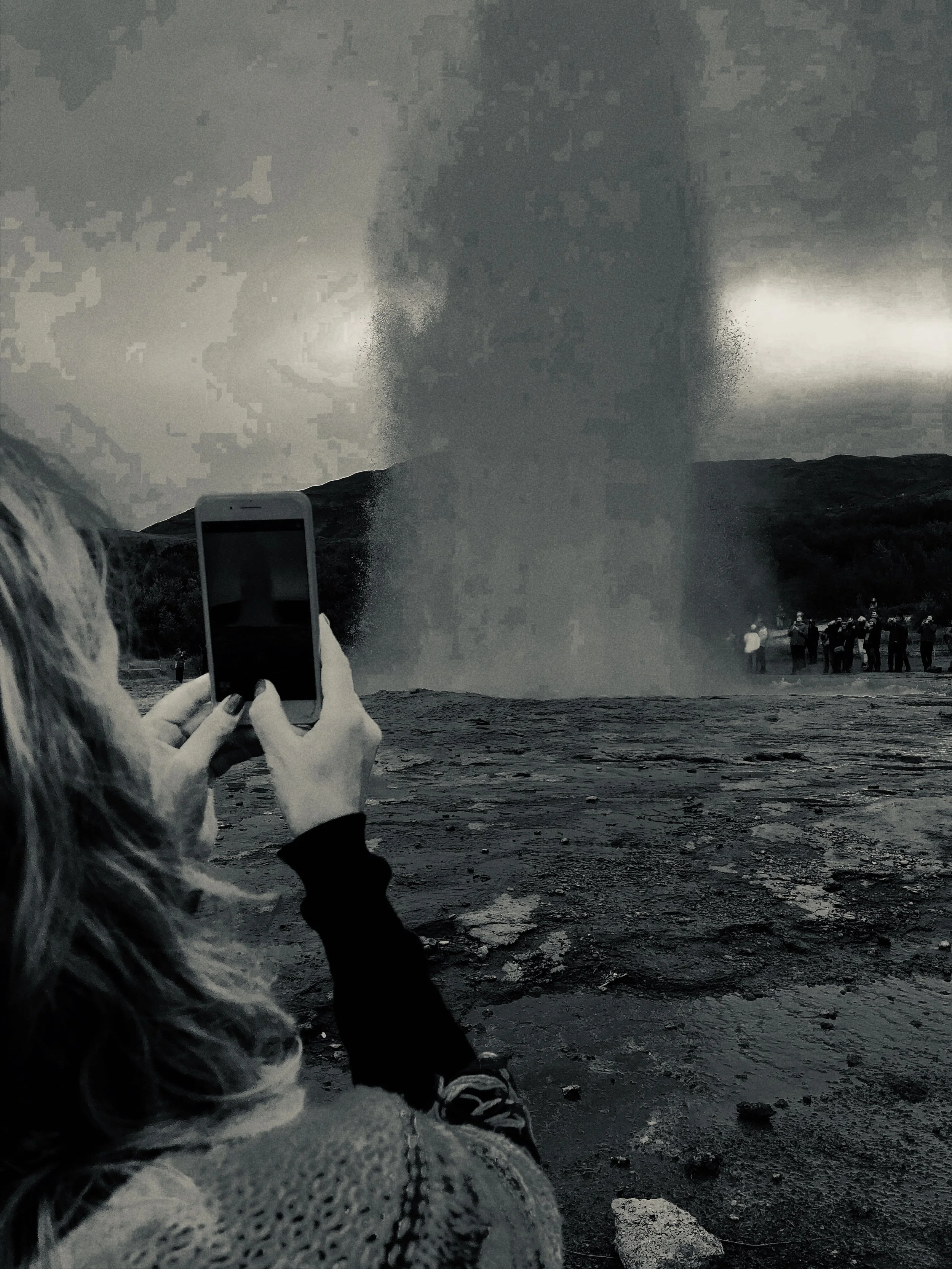KUUS - REYKJAVIK

6
REYKJAVIK
AUGUST 2019
Iceland is an island country in the Atlantic Ocean. A large part of this beautiful country is covered by lava fields, which, in turn, are covered by glaciers. Iceland is a volcanically active island and weak unfeelable earthquakes are registered every day. Yet dangerous earthquakes occur after every 5-6 years.
Some more interesting facts about Iceland. Greenland is just 702 kilometres away from Iceland. What concerns the lifespan of Icelanders, they're among the highest in the world: women up to 81.3 years and men up to 76.4 years. Half of the population lives in Reykjavik because the inland is unfit for habitation. Iceland is the least populous country which has ever participated in the World Cup and the football fans' famous war chant “HÚH!” is known all around Europe.
Iceland is also famous for many bans that wouldn't even occur to most of us. Ban on keeping dogs as pets. In 1924, keeping dogs in Reykjavik was forbidden because dogs spread dangerous viruses. Today, keeping dogs as pets is allowed again, but dog owners must follow very strict health-related requirements. Due to the ban on dogs in the past, Reykjavik is mostly a city of cats. It is also forbidden to keep snakes, lizards and tortoises as pets in order to avoid any outbreaks of diseases. If a horse should leave Iceland, it is not allowed back in its home country.
Islandic Horse
Ban on alcohol. The ban on drinking alcohol came into effect in 1915. Since 1935, it was allowed to drink alcohol with an ABV of 2.25% (except beer). Drinking beer was forbidden until 1989 and today the Beer Day is celebrated on the 1st of March.
Ban on watching TV. From 1966 to 1983, television programmes on national television were banned so that people would dedicate more time to social activities. In addition, until 1987, television programmes on national television were banned in July. Why? People must get some rest in the summer and spend more time outside.
There was one peculiar law regarding the Basque people. In 1615, three Basque whale ships drowned in the north-west of Iceland and the men who survived were left without food, which led them to rob local people. Thus the sheriff decided to kill all the Basques and this law was written in the books until 2015. Reykjavik is also the only western Europe capital that doesn't have Starbucks nor McDonald's.
What else? There are funny birds called Puffins living in Iceland who are dubbed “the clowns of the sea” due to the way they look like. But in reality, Puffins are sweet little birds that remind a little bit of penguins, though they don't really share anything in common. Geographically speaking, they're not even neighbours. Iceland has the largest colonies of Puffins in the world, which means that half of the Puffins in the world live there. Average lifespan is unusually high for these birds, that is 20 to 25 years, and they spend most of their life with a single partner. The Atlantic Puffin is an excellent diver and fast flyer. They can dive as deep as 60 metres and fly as fast as 88 kilometres an hour.
Iceland is also famous for its grass-roofed buildings that are called turf houses. This type of housing kept the Icelanders and their culture alive for centuries.
In the harbour area, you can find a hill called Þúfa. The designer of this remarkable art piece is Ólöf Nordal. The top of Þúfa overlooks the harbour and the Harpa Concert Hall. There is a wooden shed on top Þúfa where fish is dried.
ÞÚFA
The book on running that found its way onto my night stand this time was Running with the Kenyans by Adharanand Finn. I learnt from the book that one of the reasons why Kenyans are able to run so fast is that they run barefoot most of the time in their childhood and adolescent life. They also run barefoot in the running competitions because the parents simply don't have money to buy running shoes for their children. When the children are late to school, they get beaten by their teacher, so in order not to be late, they run all the way to school. Again, barefoot. One of the ways you can benefit from running barefoot is that, this way, you'll get to learn to feel your body better. Kenyan runners are motivated to work hard in order to improve their lives. They have incredible role models that make Kenyans train even harder. Their training conditions are quite ascetic, even if they've already won a few competitions. Implementing simpler training methods forces them to put more effort in. A lot of emphasis is placed on nutrition. A lot of them don't wear heart rate monitors, but tend to be more self-reliant. Runners start their first training already before the sunrise. The second training takes place in the evening and they take the time off for the rest of the day. Runners don't go to work and getting some rest between the two trainings is important because if you go to work, you don't have energy to run. What a luxury! We here go to work all day, get some rest and run when we've got time left over from working.
There is an interesting thought in the book:
“Running is like getting drunk in reverse. With drinking, it feels great at first, but then you start feeling awful. With running, you feel awful at first, but then, after you finish, you feel great. That sounds like a much better deal.”
But back to Iceland. The registration for the marathon started in January and thus I enlisted myself immediately because I was afraid that if I waited too long, I'll lose my spot. I was thinking that Iceland is indeed such an awesome country and the Reykjavik Marathon definitely must be popular among the runners as well. To my great surprise, it turned out that it was also possible to register yourself on the marathon right there on the spot, just a day before the start. Even though Iceland is a small island country, there is a lot to discover. Just a few dozen kilometres away from the airport, you'll find the Blue Lagoon. Many people think that this place is too hyped up and only tourists go there. But I'm also a tourist and despite the expensive fee, I'd say that this place is still worth a visit. The Blue Lagoon is one of the wonders of the world. Since the Blue Lagoon is so close to the airport, the most convenient way to go and enjoy the pleasures of water and spa is either just when you arrive in Iceland or right before you leave. We decided to visit this wonder of the world just as we arrived. You should definitely make a booking beforehand because the number of visitors per day is limited. With the Comfort Package, you get a towel, a mud mask and a welcome drink. The bar is right in the middle of the lagoon, so you can enjoy the drinks at the same time as the water procedures. The temperature of the water in the lagoon is up to +40 degrees Celsius and an hour is quite enough time to be there. The water is light blue due to silicon dioxide (silica). What's more, the water is rich in different salts and algae. The hot water is directed from a geothermal power plant into the man-made Blue Lagoon. Underground geological layers have rich mineral content. Water renewal takes place after every two days, so there is no bacteria, fungus nor plants.
We continued to drive by the coast towards the next natural spa – Reykjadeur Hot Spring Thermal River. Slowly the dark lava fields started to turn a little bit greener. The soil, which is unfit for life, has been well-utilised by building golf courses. Arriving in the inland, we found ourselves utterly unexpectedly in the midst of the greenery where horses and sheep grazed on grass. Hot Spring Thermal River is located in the mountains, and to get there you must take about a three kilometre walk. The land surrounding us was boiling in the direct sense of the meaning. The heaters were simmering and the water in there was up to +100 degrees Celsius. You couldn't sit on the ground for too long for it got hot like fire really fast.
Even if you have to put in some effort to get to that natural spa, it is definitely worth it!
Next, we took the direction towards Reykjavik already. The start of the marathon is given on Laekjargata Street, at the heart of the city. At the marathons, I always try to find an accommodation near the start, so that I wouldn't have to worry in the morning whether I'll make it there at the right time. Naturally, lots of roads are closed on the Marathon Day, and when you're in a foreign city, it might be difficult to find your way around. Our home for the marathon became a small guest house adjacent to the Hallgrimskirkja Church, a 10 minute walk from the marathon start. There were 1,181 runners at the start of the full 36th Reykjavik Marathon. The starting pistol was fired at 08:40 and the finish was closed at 16:10. The first part of the marathon took place on a level ground and it was very easy to run. People had come to the streets from their homes to cheer on the runners. Every now and then the speakers roared with loud music and the tables were set for the runners. Even beer was offered to those who wanted it.
The route passed by The Sun Voyager, the Viking ship sculpture. That sculpture symbolises and reminds Icelanders of their past.
The Sun Voyager
The views were beautiful and the first half of the distance went by flying.
The other half of the marathon was already more hilly and it wasn't as fun anymore. Lovely greenery still surrounded the route at the beginning of the start of the second half. The ending of the route proceeded up and down through a boring suburb. For the 40th kilometre, the route came back to the heart of the city and the last two kilometres passed accompanied by the cheers of the spectators. A nice green spot of grass waited us at the finish where it was good to rest our feet a little bit.
Reykjavik Marathon 2019
There are many heated pools in Reykjavik and the marathon runners held a free pass to visit them on the day of the marathon or the day after. I, for one, decided to dip my tired feet in the Kvika footbath.
Kvika Footbath
An annual Reykjavik Cultural Night takes place on the same day with the Reykjavik Marathon. A large stage had been built on Laekjargata Street where different bands gave concerts. Laugavegur was totally buzzing with people. The DJs played the music and people danced in the streets. Live music sounded in the parking houses and adjacent courtyards. It seemed like all the adults of Reykjavik had gathered with their children and dogs to party in the city. Amazing fireworks put an end to the party just before midnight.
Reykjavik Culture Night
There are many nice cafes and places to eat in Reykjavik. People are very kind and helpful. The queues move slowly because Icelanders love to chat a lot. A small bakery named Braud, on Frakkastigur Street 16, became our favourite breakfast spot. Delicious pastries were prepared right before our eyes.
If you are curious to know what time the cafe is opened in the morning, then the sign on the door reads “early”.
Braud
Our next favourite was Babalu, on Skólavörðustígur Street 22A. A place with a cool vibe and friendly waiters. You can refill your coffee cup as many times as you like.
And the place designated to satisfy your biological needs speaks volumes as well.
You can find fantastic street art in the streets of Reykjavik.
If you don't know how to tie a tie, then you'll find some instructions on Laugavegur Street.
Fishing is a big source of income for the Icelanders and the fish is always fresh and delicious in the restaurants. The water in which the fish grow is very clean and of good quality, and all of this translates into the taste of the fish.
The prices of other foodstuffs in Iceland are very high due to the fact that lots of it is exported as the soil in Iceland is unfit for farming. But the fans of fish and chips don't stand a chance of growing hungry in Iceland.
Also visit Bæjarins Beztu Pylsur, a hot dog kiosk on Tryggvagata Street 1. The price for one hot dog is about three euros, but this is a very, very cheap price compared to other prices in Iceland. Those in search of a bigger meal will find that one dog is not enough.
On the day after the marathon, we decided to visit the Secret Lagoon. The Secret Lagoon is a man-made pool beside the hot springs. There are hot water heaters simmering next to the pool from which hot water is directed into the pool.
You could buy different beverages from the bar to enjoy while leaning against the side of the pool. The water in the pool was about 40 degrees Celsius and it was nice to nurture my post-marathon tired body there.
Secret Lagoon
There are many hot water springs near the Secret Lagoon (which isn't quite that secret anymore).
As well as mighty geysers, which give a burst of water at short intervals.
We also visited Kerið, an already dead volcano which is composed of a red volcanic rock. It is now believed that about 3000-year-old Kerið was a cone volcano which erupted and emptied its magma reserve. Once the magma was depleted, the weight of the cone collapsed into the empty magma chamber.
Kerið
Life in Iceland is actually truly simple. Being there helps you clearly understand how little we really need for life. Last views from the tower of Halgrimskirkja, the highest church in Iceland, and the time has come to say good bye to this beautiful island country.
Amazing land and lovely people. Thank you, Iceland!


